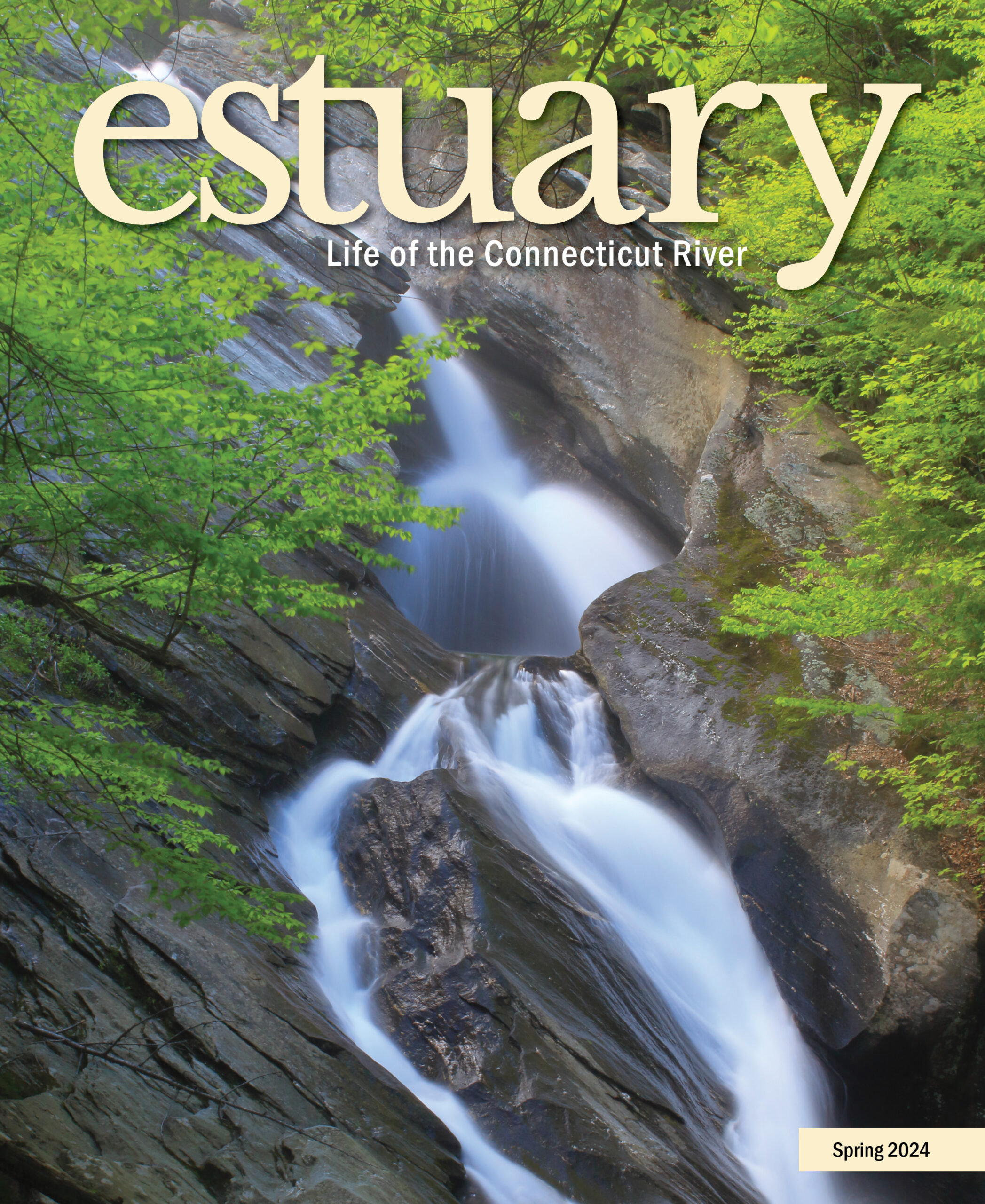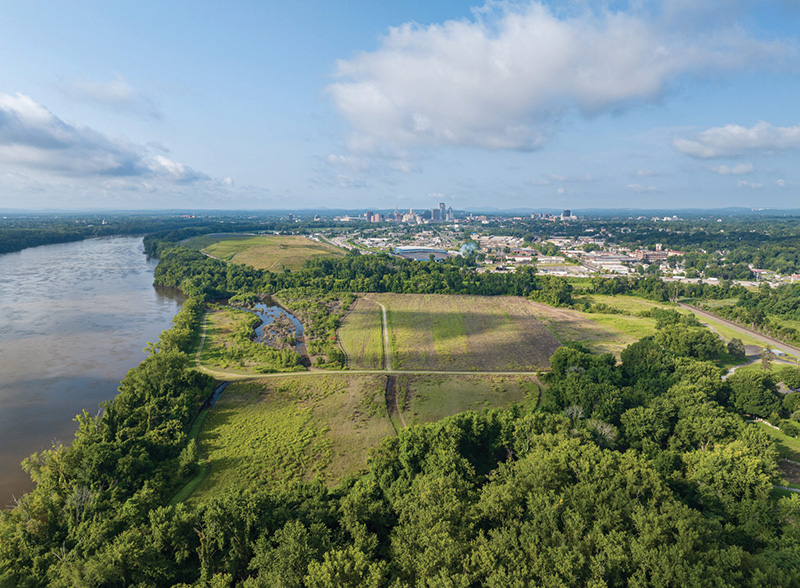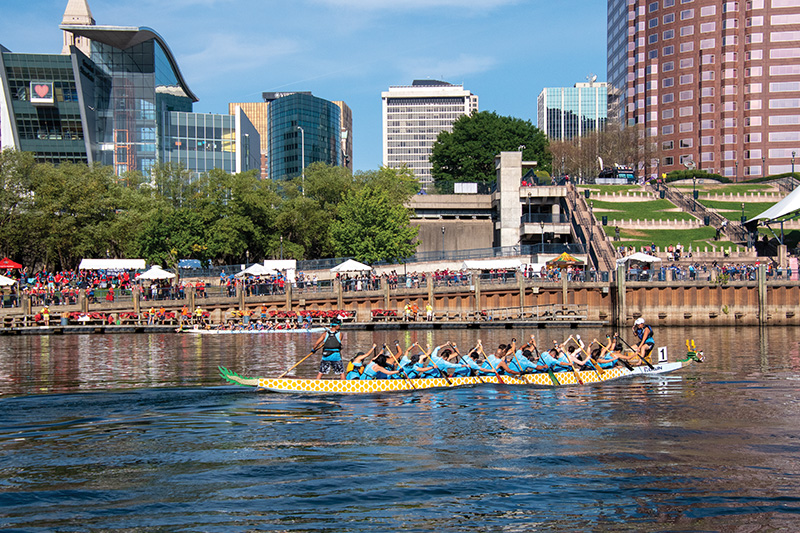 This article appears in the Spring 2024 issue
This article appears in the Spring 2024 issue

Moments after we stepped out of our car and began to take in the 61 acres of open space sweeping down to the Connecticut River, we spied a coyote skirting the tree line. A hawk circled above, and in the distance, Dave Whitmore, park operations crew team leader for Riverfront Recapture, turned his tractor back to mow another row of meadow.
Evidence that we were still in the capital city of Hartford was nearby but not intrusive: the train tracks and I-91 at our backs, the entrance to Keney Park just out of sight over our left shoulder, the tall tower of the former Fuller Brush Company (awaiting conversion into apartments) over our right shoulder, and the grass-covered capped city landfill to our south behind a buffer of trees and dike.

The 61-acre parcel now owned by Riverfront Recapture and 16- acre state-owned parcel destined to be a new city park. Image Credit: Courtesy Riverfront Recapture.
We were standing in one of the last undeveloped parcels in the city of Hartford, purchased through private donations by Riverfront Recapture in 2021 to create the city’s next community park. My husband, Paul Eddy, a former Riverfront board member, joined me and our tour guide Director of Development Debbie Baker. Riverfront Recapture is special to us. Paul and I met one summer during college when I took a temp job with the fledgling organization 42 years ago and have been supporters ever since.
On this chilly November day, we had a chance to witness another new beginning. Since its start in 1981, Riverfront Recapture has been steward and developer of four riverside parks encompassing 148 acres in Hartford and East Hartford—all owned by those municipalities. This is the first parcel Riverfront Recapture owns outright.
The idea that Hartford could reunite with its riverfront was a radical idea 40 years ago. The city had been walled off from the river by a system of dikes in the 1940s due to the river’s penchant for flooding and consequent polluting. The construction of I-91 at mid-century created a second seemingly insurmountable barrier to access.
But times had changed. The river had become cleaner, and more and more cities were reaping the benefits of bringing people back to their riverfronts. A group of dedicated individuals asked, “Why not here?”
The first “recapture” came just a few years later, in 1984. Improvements were made to the existing Riverside Park (designed by the firm of Frederick Law Olmsted and opened in 1899), and the boat launch in East Hartford. A new dock and scenic overlook at Charter Oak Landing were completed the following year and the first phase of East Hartford’s Great River Park the year after that. A direct connection from downtown Hartford, though, had to wait for the massive reconstruction of I-91 to lower it and enable construction of the Mortenson Riverfront Plaza, completed in 1999.
Since then, the riverfront parks have been animated with programs and activities, on the river and off, and by amenities such as trails, floating docks, and a boathouse. Riverfront came to a ground-breaking agreement with the Metropolitan District Commission to partner in managing and providing security in the parks. Today, the parks welcome more than 780,000 visitors a year.
And yet for Riverfront, there’s more to do. And that brings us back to the as-yet-unnamed park bordering the town of Windsor and a 16-acre riverfront parcel owned by the State of Connecticut—making a combined 77-acre park project.
Much of the property lies within the flood plain, so, as with the other parks, plans assume there could be annual flooding. In fact, the planned expansion of an existing small cove could both help absorb water during flooding events and host paddle sports activities at quieter times. Rowing, kayaking, canoeing, dragon boating, and stand-up paddleboarding are some of the activities being considered. Fishing piers and an amphitheater are planned. A 10-acre section at the high point of the property by the railroad tracks will be developed for compatible commercial or residential use.

Mortenson Riverfront Plaza during the 2022 Dragon Boat and Asian Festival, one of four Riverfront Recapture-managed parks. Images Credit: Andy Hart, courtesy Riverfront Recapture.
A few weeks after our tour, Riverfront selected New York-based Hargreaves Jones from 29 landscape architecture firms that submitted park design concepts. Hargreaves Jones has designed urban riverfront parks in San Francisco, Philadelphia, Louisville, and elsewhere. They’ll work with the local Hive Public Space, a people-of-color and women-led urban design and placemaking studio, on a community engagement process to connect with future park users of all ages and abilities.
Walking trails will connect to a regional trail system between Hartford and Windsor. A new section of trail will be named for Joe Marfuggi, the much-beloved executive director who passed away in 2018 after leading the organization from 1986 to 2015. Walkers will be able to connect to Riverside Park along a 2.5-mile trail with stations presenting the river’s natural history. From Riverside Park, existing trails link visitors to Charter Oak Landing on the Hartford side, and via pedestrian access to the Founders and Charter Oak bridges, to the park and trails on the East Hartford side. (Visit riverfront.org/trails/ for maps and information about existing trails.)
The purchase of the new park property was funded by the Richard P. Garmany Fund, the William and Alice Mortensen Foundation, and the Mowell Family Fund at the Hartford Foundation for Public Giving. The state Bond Commission provided funding for developing public access and the trail connection via the Capital Region Development Authority and the state Department of Energy and Environmental Protection. Connecticut Department of Transportation provided additional funding for trail development through a Community Connectivity Grant awarded to the town of Windsor in partnership with Riverfront Recapture.
The development of the property is still a ways off—these projects take time and a lot of money. Studies have to be conducted, concepts tested, community input incorporated, and funds raised. You can help out by visiting riverfront.org/joemarfuggiriverwalk/.
With one last glimpse of the coyote hunting in the newly-shorn meadow, we thank Debbie for the tour and explanation of Riverfront’s vision for recapturing this latest parcel for the benefit of city residents and the general public. It’s exciting to once again be at the beginning of a project to bring people back to the river. Watch for your opportunity. Community input sessions and walking tours are planned in 2024, and you can share your thoughts online at riverfront.org/newpark.
Elizabeth Normen is Assistant Editor and Director of River Partnerships at Estuary magazine and a longtime supporter of Riverfront Recapture, Inc. Riverfront Recapture is a River Partner of Estuary magazine.
